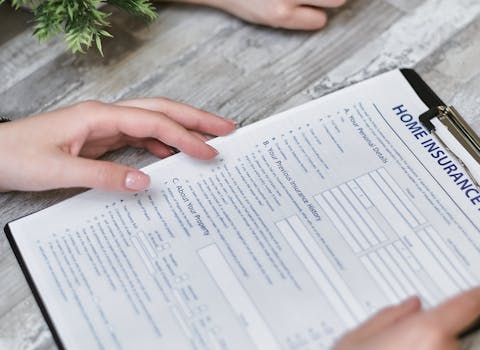Home Insurance
Understanding Liability Coverage in Home Insurance: What You Need to Know
Liability coverage home insurance protects you from lawsuits and costly home accidents. Explore tips, real scenarios, and checklists to secure your finances and peace of mind now.
Advertisement
Accidents at home feel distant until one happens on your doorstep. Curious neighbors slip, a delivery driver twists an ankle, and suddenly weekend plans turn into insurance paperwork. The moments that follow make homeowners realize how prepared—or exposed—they really are.
Liability coverage in home insurance covers real-world risks that can upend daily life. Whether it’s a friend’s injury or property damage, these scenarios impact finances and peace of mind. Preparing for them means understanding policy details and protections before you actually need them.
This guide walks you through liability coverage home insurance, using practical steps, relatable examples, and straightforward tips. Start now to ensure your family’s home and finances are better protected against whatever life throws your way.
Pinpoint the Reasons Liability Coverage Matters for Homeowners
Getting clear on why liability coverage home insurance holds real weight helps you act before you ever need to file a claim. These protections impact your future in direct, practical ways.
When a mishap happens on your property, your policy can buffer you from legal bills or hefty medical payments. The chain reaction of costs never starts with a warning; coverage anchors your defense.
Unexpected Guest Accidents: A Realistic Scenario
Imagine you’re hosting a small gathering, and a neighbor stumbles on a loose step just as guests arrive. Her fall requires an ambulance and Jack, your neighbor’s spouse, looks worried while calling their insurance provider.
Without liability coverage home insurance, you’re left handling sudden bills and tense conversations alone. Instead, a well-chosen policy can manage expenses from the very first call, making repairs and payments far smoother.
Action: Walk your property with “stranger’s eyes” today, noticing every tripping hazard or loose railing. Fix one issue this weekend using a simple checklist for easy wins: sweep, secure, and spot-check.
When Household Members Cause Damage Offsite
Your teenager accidentally hurls a baseball through a neighbor’s window while practicing. The neighbor crosses over, holding a shattered windowpane and looking for solutions.
Liability coverage home insurance steps in, paying for damage repairs and avoiding tense negotiations. Your teen’s mistake is resolved quickly with just a phone call to your agent.
Takeaway: Add a reminder on your phone to review accidental damages in your policy—see if “off-premises” incidents are covered and note the process for reporting claims.
| Scenario | Who Is Liable? | Typical Cost Range | Coverage Solution |
|---|---|---|---|
| Slip on Property | Homeowner | $2,000 – $30,000 | Medical payments, legal defense |
| Dog Bite Incident | Homeowner (dog owner) | $1,500 – $50,000 | Personal liability, medical coverage |
| Fallen Tree Damaging Car | Homeowner | $500 – $10,000 | Property liability |
| BBQ Fire Spreading | Homeowner | $3,000 – $100,000 | Personal liability, property liability |
| Child’s Ball Breaks Window | Parent (homeowner) | $150 – $1,200 | Family liability |
Know Your Policy Limits and Exclusions with Real Examples
Knowing your liability coverage home insurance limits gives you power to prepare for real-life claims. Homeowners should check precisely what’s included and what’s not so surprises are avoided.
Let’s break down how much is enough and what falls outside your policy’s help zone. Reading the declarations page should become routine for every household.
Interpreting Coverage Limits
Your friend Mike says, “My agent told me $300,000 is enough.” But when his dog nips a delivery person, medical bills could soar above his expectations. Higher limits protect against court judgments and stubborn legal expenses.
- Review your declarations page to spot your existing liability limit—usually $100,000, $300,000, or $500,000, with some companies offering higher tiers for extra peace of mind.
- Ask your agent to explain scenarios that would max out your coverage. Knowing these details in advance arms you against surprises and motivates smarter shopping or upgrades.
- Calculate assets worth protecting—combine the value of your home, car, savings, and investments to see if your liability coverage home insurance matches your risk level.
- Estimate the cost of high-severity injuries or lawsuits in your state, as some regions have higher legal payouts due to local regulations and jury verdicts.
- Request a side-by-side quote for increased limits—if the extra annual premium is manageable, upgrading may give lasting returns in crisis moments.
A little math and time upfront means avoiding financial stress later. Print or save your limits somewhere easy for your family to access or review yearly.
Common Exclusions to Watch
Policies include boundaries. Incidents like intentional harm, business pursuits at home, or damages due to poorly maintained pools usually aren’t covered.
- Double-check home businesses—running a daycare or salon likely needs add-on endorsements since standard liability coverage home insurance won’t apply.
- Community property rules matter—multi-family buildings or rental rooms may be exceptions and demand extra review with your agent.
- Avoid illegal pet breeds—some dog breeds or exotic animals are listed as exclusions in many policies, leading to denied claims if incidents occur.
- Regularly update features—new trampoline, pool, or treehouse? Notify your insurer and adjust your policy to avoid gaps or denied coverage.
- Document maintenance—insurers may deny claims if neglect, like unshoveled snow, leads to injury. Keep records of repairs and seasonal chores to back your case.
Keeping a running list of upgrades and changes to your property makes adjusting and confirming coverage far simpler during your annual policy review.
Address Claims and Payouts: What Happens Step by Step
Clear action steps help you set expectations for the claims process under liability coverage home insurance. The right documentation and pace shape the outcome.
Immediate Actions After an Incident
Reacting swiftly helps secure evidence and maintains credibility with your insurer. First, attend to any injured person, taking care to remain calm and cooperative even as you gather their contact info.
Next, document the scene—photos, videos, and written descriptions capture details clearer than memory later. Politely ask witnesses, “Would you mind sharing a short summary for our records?”
Call your insurance agent within 24 hours of the event. Provide only factual statements; avoid admitting fault until details are confirmed. Record every step on your phone or a notepad.
Insurer’s Assessment and Decision
Your insurer may send an adjuster to review the property, ask further questions, or request additional records. Responses are generally faster when documents are organized and accessible.
Expect a written notice of claim status—approval, denial, or need for more info—usually within a couple of weeks. Payouts are based strictly on the policy language and claim evidence.
If denied, ask your agent to walk through the reasoning and consider appealing the decision with more documentation or a written explanation. Keeping everything in writing speeds up results.
Minimize Liability Risks in Your Everyday Decisions
Addressing risk factors reduces the likelihood of needing liability coverage home insurance in the first place. Small actions each month bolster your protection and keep accidents at bay.
Identifying Hidden Hazards
Walk your home as a guest would—what’s loose, slippery, poorly lit, or cluttered? A broken step or extension cord can lead to costly claims but takes minutes to fix or move.
Create a seasonal checklist so yard maintenance or snow removal gets regular attention. Mark dates on your calendar for quarterly tours and repairs, involving older kids as part of the routine.
Host a quick safety walkthrough before big events. Assign family members to check rails, salt pathways, and “kidproof” play areas for both visiting children and elderly relatives.
Setting Household Rules for Safety
Hold a family meeting using clear, practical examples: “No running in the hallway during wet weather—shoes on mats, please.” Simple scripts create lasting habits that reduce risk over time.
Install no-slip mats in showers, add handrails to stairs, and remind everyone to tuck away charging cords or shoes. When rules lag, answer with reminders rather than blaming.
Test smoke alarms and outdoor lights twice yearly—backup plans that prevent injuries, especially during storms or late-night visits from friends or delivery drivers.
Boost the Value of Your Liability Coverage with Smart Add-Ons
Enhancing your liability coverage home insurance with endorsements and umbrella policies elevates your protection. These add-ons address lifestyle needs and assets that basic policies skip.
Evaluating Personal Umbrella Coverage
A standard policy covers many claims, but severe injuries or lawsuits can outpace even $500,000 limits. Personal umbrella insurance extends beyond, adding $1 million or more on top—often for under $300 a year.
Umbrella policies stack coverage, protecting your home, autos, and more from catastrophic legal outcomes. They’re especially smart for households with pools, frequent guests, or youthful drivers.
Ask your agent, “If I faced a $1 million lawsuit, what exact steps would my umbrella policy cover from start to finish?” Knowing the answer helps clarify value and specific gaps.
Consider Extra Endorsements Specific to Your Home
Some homeowners upgrade for higher sub-limits on watercraft, rental activities, or in-home business risks. Standard liability coverage home insurance maxes out, but endorsements flex for personal situations.
Evaluate whether valuables like art, special pets, or frequent club meetings should trigger a separate policy review. Involve your family or trusted advisor to brainstorm possible blind spots every few years.
Document every upgrade—scanning receipts or keeping a quick spreadsheet—so claims move faster if a future event involves upgraded or newly covered assets.
Enhance Your Day-to-Day Peace of Mind Through Annual Policy Reviews
Setting a yearly date to review your liability coverage home insurance keeps your protection relevant and up to date. Family changes, renovations, or new pets each add new risk layers worth attention.
Checklist: Conducting a Yearly Insurance Audit
Create a recurring calendar alert for policy checks, maybe every spring or after tax season. Make it a family habit so everyone recognizes the value—even if nobody’s excited about paperwork.
During your review, confirm your liability limit, verify recent property changes (new fences, pets, backyard features), and read any notifications about policy updates or exclusions you missed last renewal.
Invite your insurance agent to explain new offerings or discounts tailored to your evolving needs. Use the call to jot down highlights and items to research after your meeting.
Compare Offers to Guarantee the Best Rate-to-Coverage Ratio
Collect three to five competitive liability coverage home insurance quotes every few years—use a spreadsheet for clarity. Agents expect comparisons, so ask them directly, “Can you match or beat this quote?”
Document why you chose your current provider. Was it response speed, price, or clear policy terms? Review what others are offering relative to your property and location for ongoing savings.
Share results with friends or neighbors. Local groups sometimes uncover hidden discounts or recent claim stories others overlook, which can improve community awareness and safety habits.
Make Informed Decisions for a Secure Future
Knowing the specifics of liability coverage home insurance transforms how you handle risks, claims, and upgrades around the house. Every section above offers a distinct step, script, or checklist to anchor smarter choices.
Apply these clear steps—policy reviews, maintenance routines, and targeted upgrades—to your home life this month. Each move reduces future stress while improving your odds of stress-free ownership and neighborly goodwill.
Starting now, personalize your approach. Test a risk walk, revisit coverage limits, or call your agent with one priority update from this guide. Each action pays ongoing dividends for your household security and peace of mind.





